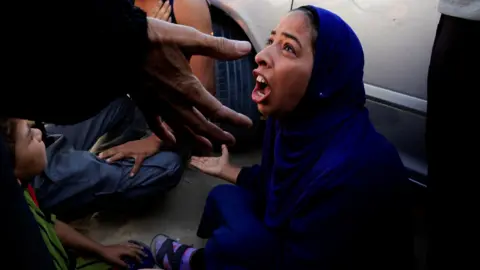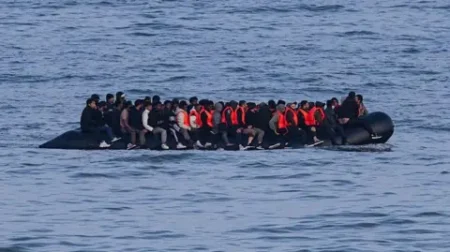On July 16, 2025, a tragic incident unfolded at an aid distribution center operated by the Gaza Humanitarian Foundation (GHF) in southern Gaza, resulting in at least 20 fatalities. This situation arose amidst an intense and chaotic environment as people gathered to receive essential aid. The heartbreaking event reportedly occurred in Khan Younis, a region that has been severely impacted by ongoing conflicts and humanitarian crises. Reports suggest that among the deceased, 19 succumbed to trampling as people surged forward in desperation for aid, while one individual was allegedly injured with a stabbing during the pandemonium.
The GHF, which is supported by the United States and Israel, has faced significant scrutiny following the event. In its reports, the organization indicated that individuals affiliated with Hamas were responsible for inciting chaos, exacerbating an already dire situation. Conversely, the Hamas-run Government Media Office contested these claims, alleging that GHF was seeking to obscure responsibility for the calamity. Evidence and testimonies from Nasser Hospital in Khan Younis noted that several of the deceased had suffered suffocation due to tear gas inhalation and crush injuries, opening up further lines of inquiry concerning the actions of forces present at the scene.
Eyewitness accounts provide chilling insight into the scene at the GHF facility. Footage circulating online depicted a witness recounting the heartbreaking moment when six deceased individuals were transported to Nasser Hospital in Khan Younis. This witness lamented the loss of young lives, emphasizing that children bore no responsibility for succumbing to these tragic circumstances while awaiting food supplies. As he recounted the event, he confirmed that the crush occurred because of barriers improperly set up to manage the crowd, which ultimately trapped and suffocated individuals striving for aid.
Additionally, an injured individual named Mahmoud Fojo shared his harrowing experience, explaining how he found the gates to the aid distribution center were being closed as the crowd swelled. He described the ensuing pressure as people pushed against one another, creating a life-threatening situation where some of those caught in the surge fell to the ground and were subsequently trampled. Eyewitness reports also mentioned the presence of armed contractors who allegedly discharged pepper bombs into the crowd, a decision that the Government Media Office insists contributed to the disastrous crush.
The GHF’s representatives have firmly denounced the allegations regarding the deployment of tear gas or live rounds, asserting that only limited pepper spray was used as a precaution. They claimed an American worker bravely ventured into the chaotic crowd to rescue a child who was in danger of being trampled, revealing the complexities and pressures faced by aid contractors in such fraught situations.
In light of these events, the operations of the GHF in Gaza have come under increased scrutiny. These operations often utilize private security contractors to manage aid distribution amid Israeli military zones. Israel and the United States justify this practice as a necessary measure against Hamas’s possible interference. However, the UN has expressed its refusal to collaborate with GHF, questioning the ethical foundation of their operations. Reports from the UN paint a grim picture, noting that hundreds of thousands of civilians are in dire need of aid and are compelled to converge on a mere handful of distribution points. In a statement urging action, a UN human rights representative highlighted the impending humanitarian disaster in Gaza, demanding unrestricted access for aid to alleviate the overwhelming shortages faced by civilians.
These tragic occurrences at the GHF aid site bring to the forefront the ongoing humanitarian crisis in Gaza, but more importantly, they underscore the necessity for immediate measures to ensure safety and facilitate the delivery of critical support to those in dire need. With reports of significant civilian casualties accumulating daily, this inflection point calls for urgent international consideration and action to safeguard the lives of innocent individuals seeking necessary humanitarian assistance amidst continued conflict.











